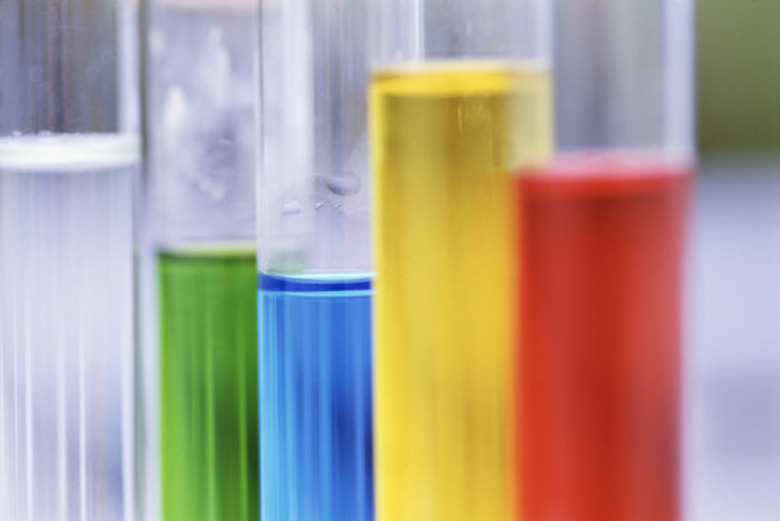Factors That Affect RF Values In Thin Layer Chromatography
During thin layer chromatography, a technician places spots of a chemical mixture on a flat plate coated with a layer of absorbent material, then sits the lower portion of the plate in solvent. As solvent moves up the plate, chemicals in the mixture move up with it at different rates, so they separate. This test determines which chemicals are in a mixture by comparing the travel rates of unknowns to known standards. The results, however, can be affected by many factors.
TL;DR (Too Long; Didn't Read)
Retention factor values in thin layer chromatography are affected by the absorbent, the solvent, the chromatography plate itself, application technique and the temperature of the solvent and plate.
Retention Factors
Retention Factors
The retention factor for a chemical during thin layer chromatography is a measure of how far it moves up the plate in response to the solvent movement. Since the absolute movement of the chemical depends on how far the solvent travels, you calculate retention factor values relative to the degree of solvent movement. The retention factor for a chemical is the vertical distance moved by the chemical from the spot where it was originally applied to the plate, divided by the distance traveled by the solvent — measured from the same starting point.
Thin Layer Chromatography Plate
Thin Layer Chromatography Plate
The thin layer chromatography plate itself can affect the retention factor value obtained for a given chemical. Thin layer chromatography plates can be coated with a variety of absorbent solids; most frequently silica or alumina. Since the retention factor is based on the relative affinity of the chemical for the absorbent compared to the solvent, changing the absorbent can greatly change the retention factor. Also, the thickness and uniformity of the layer of absorbent can vary from plate to plate, especially if they are handmade. These factors can also change the retention factor value for chemicals.
Solvent Impacts Retention Factors
Solvent Impacts Retention Factors
Since the solvent carries the chemical up the plate, the particular solvent used will also have a substantial impact on the retention factor value for the chemical. A solvent which has a stronger interaction for a particular chemical will more easily overcome any affinity of the chemical for the absorbent layer, and move that chemical farther in a given period of time. Mixtures of solvents can also have different effects depending on the proportion of each solvent.
Other Factors
Other Factors
There are a few other factors which may affect the retention factor in some cases. The temperature of the solvent and plate may make slight changes, since, for example, the solvent can often better dissolve the chemicals it is transporting at higher temperatures. The technique of the technician in applying the sample to the plate may also change the retention factor. Applying too much sample may result in large, diffuse bands of chemical moving up the plate, making it difficult to accurately measure the distance the chemical has been transported.
Cite This Article
MLA
Judge, Michael. "Factors That Affect RF Values In Thin Layer Chromatography" sciencing.com, https://www.sciencing.com/factors-values-thin-layer-chromatography-8561359/. 4 June 2018.
APA
Judge, Michael. (2018, June 4). Factors That Affect RF Values In Thin Layer Chromatography. sciencing.com. Retrieved from https://www.sciencing.com/factors-values-thin-layer-chromatography-8561359/
Chicago
Judge, Michael. Factors That Affect RF Values In Thin Layer Chromatography last modified August 30, 2022. https://www.sciencing.com/factors-values-thin-layer-chromatography-8561359/
